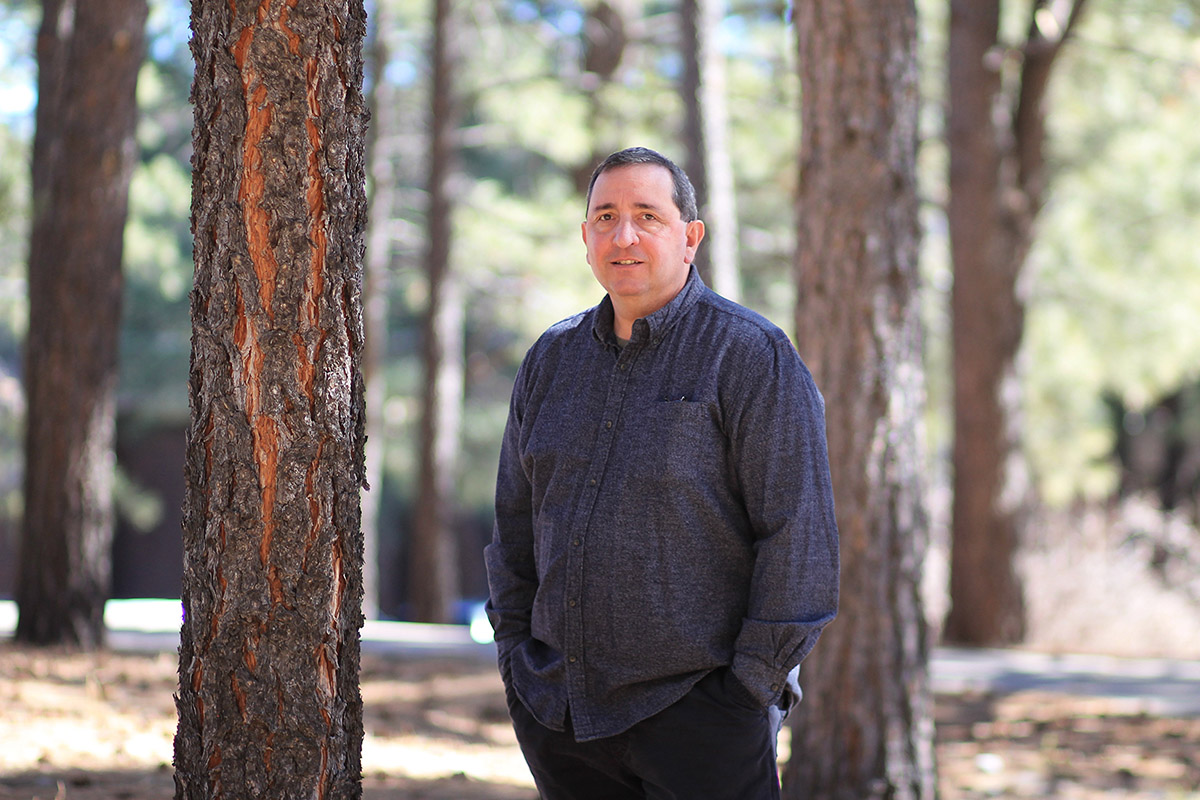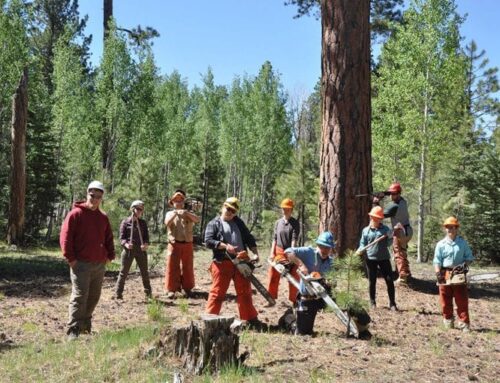Don Normandin, the research lab manager for the Ecological Restoration Institute at Northern Arizona University, is retiring after 24 years of service to forest health research and ERI’s student research program.
Normandin’s journey at ERI began in the early 2000s as an NAU student seeking a degree in parks and recreation management. From there, he began working alongside ERI ecologists in the field and ultimately helped shape and define ERI’s longstanding student research program. Normandin became known for his expertise in forest health, dendrochronology, and field and lab research management, as well as his dedication to mentoring and inspiring students.
“Don has been the quiet force behind so much of ERI’s success over the past two decades,” said ERI’s Executive Director Andrew Sanchez-Meador. “His unwavering dedication, care for our students, and steadfast belief in our mission have shaped the culture of this place in ways that can’t easily be measured.”
Normandin arrived in Flagstaff from Tempe in early 2001, determined to chart a new path after working for several years in the banking business. Feeling stuck and uninspired, Normandin headed to Flagstaff to look for a career in the outdoors.
He decided to begin a bachelor’s degree in parks and recreation management at NAU, hoping the degree would lead him into a career with the National Park Service or the USDA Forest Service.
However, when a job offer at Redwood National Park fell through, life took an unexpected turn. He chose to remain at NAU after being offered a seasonal position at ERI. That opportunity eventually led to a promotion to lab manager, during which he also completed a master’s degree in forestry.
In 2004, Normandin was officially hired as the full-time lab manager, a role he never anticipated he would hold for nearly 20 years.
“My intended career path hit a wall, took a hard left turn, and I was fortunate to land here,” he said. “I stayed because I liked what I was doing. At ERI, we are doing something that’s both productive and meaningful — we conduct the research and provide information for land managers to make decisions on the ground. Once you work for ERI, you will never just walk in the forest again.”
That mindset led him to invest many hours in the dendrochronology lab, where tree rings tell the story of the past and generations of students gain hands-on experience in ecological research.
Normandin’s knowledge of dendrochronology grew as he learned how tree rings reveal historical droughts, climate shifts, and wildland fires.
“I didn’t understand them at first—it took me about a year and a half to really see the patterns,” he admitted. “So now, when I teach dendrochronology, I focus on the process—marker rings, locations, and patterns—because I know it takes time to truly see the story in the wood.”
Over time, Normandin took on a role as a mentor, guiding students through the complexities of tree-ring analysis and broader ecological principles.
“Don didn’t just keep things running—he helped lay the foundation that allowed so many others to thrive,” Sanchez-Meador said. “His legacy lives on in the students he mentored, the projects he supported, and the people he’s inspired along the way.”
Much of Normandin’s career has been defined by his time mentoring students. Many of those he mentored have gone on to earn master’s degrees and PhDs, applying the skills they learned in the lab to careers in academia, government agencies, and environmental research.
“The biggest highlights for me are the successes of the students who come through the program,” he said. “Watching students build careers and knowing I played a role in their journey is incredibly rewarding.”
His mentorship didn’t stop at the lab doors. ERI hires undergraduate research assistants who spend time in the lab during the school year and conduct field research in the summers.
“When our students complete their programs, they no longer stroll through the forest,” he said. “They walk through the forest asking, ‘Should there be 150 trees in this acre? Is this old growth in a relic forest? Is this landscape at risk of a catastrophic fire?”
ERI students say that Normandin taught them more than just science.
“He impacted our lives in so many ways,” said Emmie Vander Pluym, a senior forestry student at NAU. “I have learned so many important life skills from Don, like changing a tire, changing a car battery, and even how to tow a trailer. It is because of all the time and dedication he put into our futures that I am the woman that I am today.”
Though Normandin’s stepping away from forestry, his love for hands-on learning remains. Whether it’s guiding students in the lab or shaping wood with hand tools, his passion for teaching and craftsmanship isn’t going anywhere
“I would love to teach woodworking somewhere—use my 30-plus years of experience to continue helping others,” he said.



